Merida launched the new One-Sixty (along with the One-Forty) towards the tail end of 2022, raising eyebrows in the process thanks in part to the stretched-out geometry, adjustability and, of course, its eye-catching looks.
The One-Sixty 6000 sports 171mm of rear-wheel travel in its mullet setup guise (29in front wheel and 27.5in rear), with a geometry chart that ticks all the long, low and slack boxes typical of the best enduro bikes.
Add in some nifty adjustability and a very solid components package, and the One-Sixty 6000 appears to have a lot going for it.
While this was true of previous iterations of the One-Sixty, when push came to shove those bikes all fell a little short.
The latest One-Sixty 6000, however, manages to right the wrongs of its predecessors.
Time and time again, no matter what type of trail was beneath its tyres, this bike just kept on delivering. It’s energetic where others flounder, forgiving where it matters most and never failed to deliver confidence when I wanted to push things that bit further.
It’s no wonder then, that I've crowned the Merida One-Sixty 6000 as BikeRadar's Enduro Bike of the Year for 2023.
Merida One-Sixty 6000 frame and suspension details

Merida offers the One-Sixty in an alloy frame, or with the CF4 carbon frame, as used on the 6000 model seen here.
Because this is an enduro bike and likely to take a serious beating, Merida has pulled out the stops to ensure it’ll go the distance.
That means the frame is designed to withstand Category 5 ASTM testing.
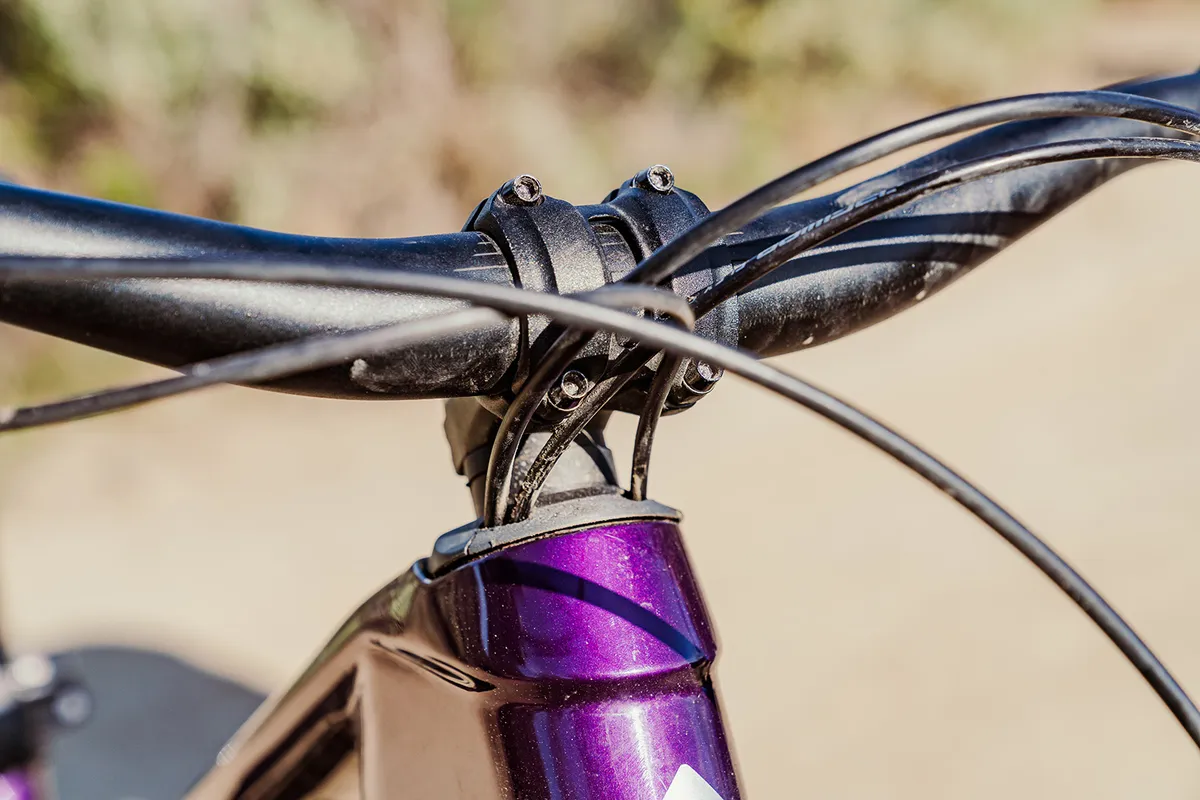
This is, in part, thanks to the lack of holes needed to be drilled in the frame for internal cable routing. Yes, cables are still routed internally, but to people’s dismay, they wind their way in under the stem before entering via the upper headset cup.
Merida carbon frames do, however, come fully sleeved, so installing the cables/hoses shouldn’t be too painful.
Size-specific leverage curves
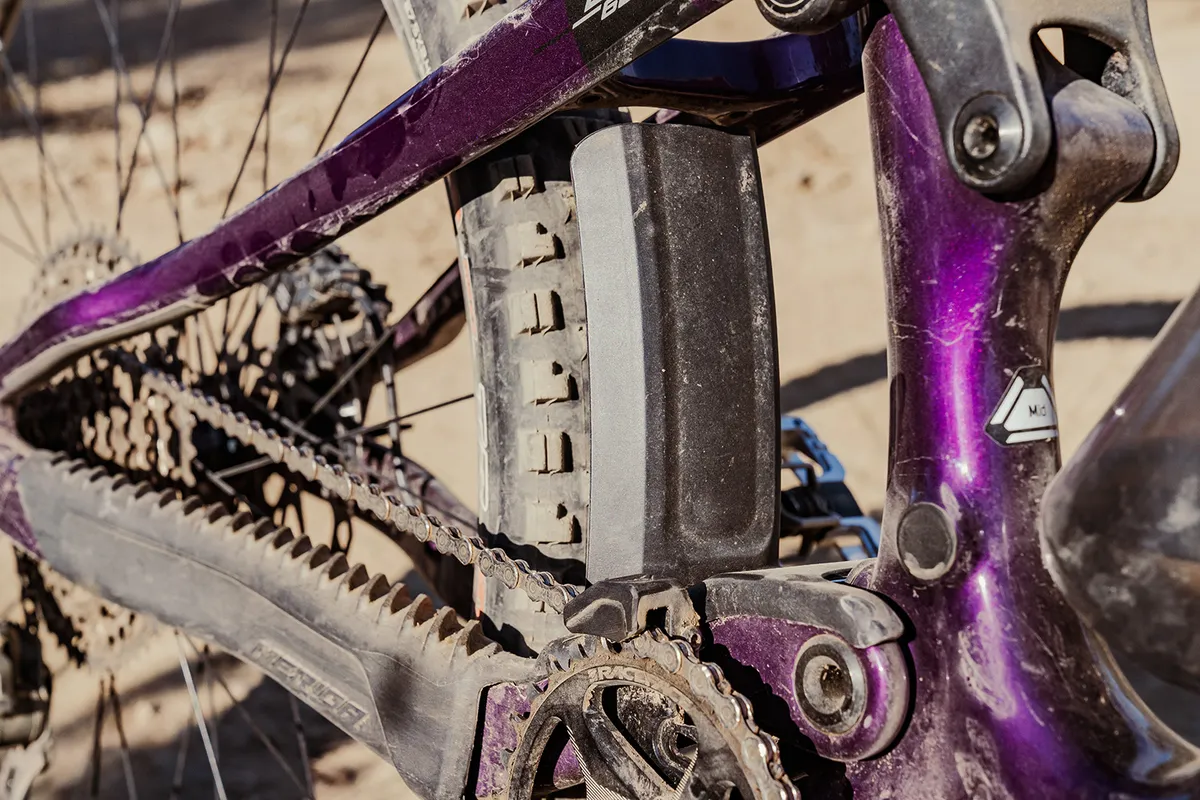
At the rear, with the smaller rear wheel fitted (as is standard with the three smaller frame sizes – the two larger sizes come with 29in wheels front and rear) there’s 171mm of travel.
Unusually for a bike with this amount of travel, Merida has opted to use a flex stay rather than a standard pivot on the chainstay or seatstay – a design technique usually found on shorter-travel cross-country or downcountry bikes.
Removing a pivot and the associated hardware helps reduce weight and potentially limit maintenance.
In this case, flex occurs in the seatstay, meaning the One-Sixty is a linkage-driven, single-pivot design.
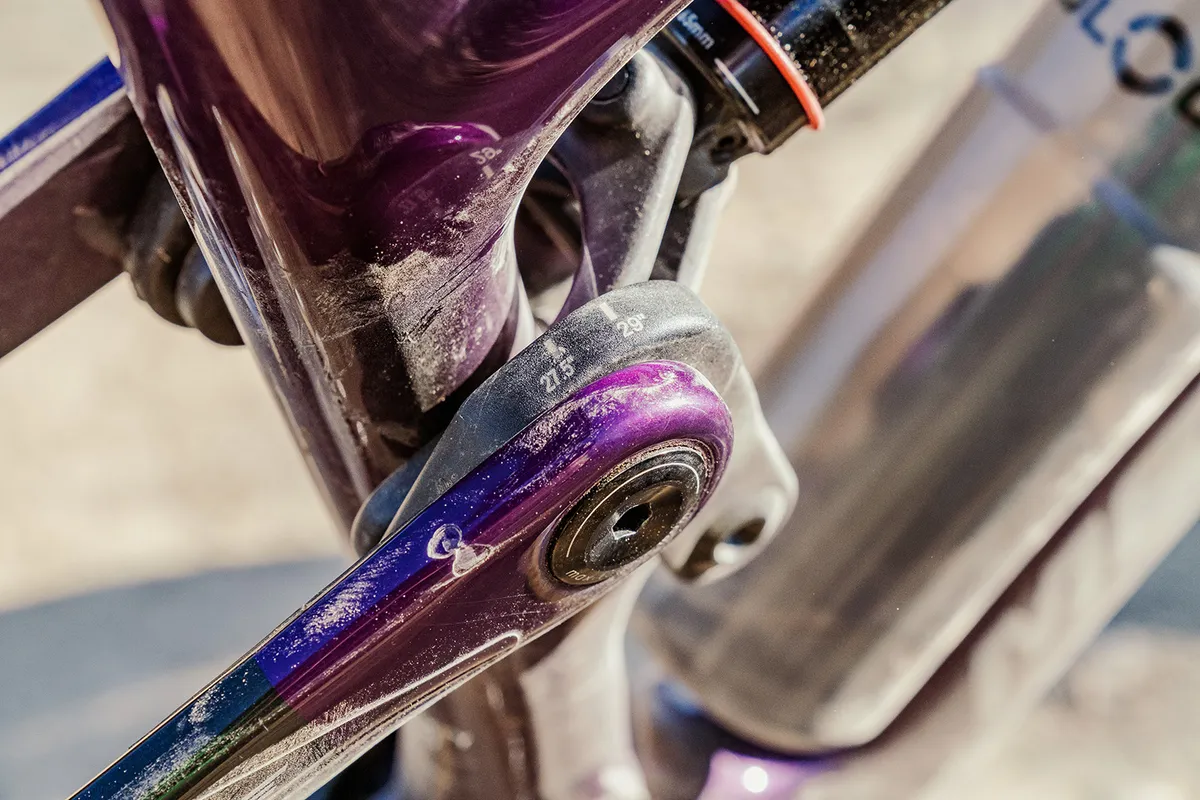
Merida has tuned leverage curves across the frame sizes in a bid to give all riders, no matter their size, the same ride feel. That means larger frames are designed to be more progressive (this is achieved by shifting the forward shock mount).
The ‘mid’-sized frame here has around 18 per cent across the entire travel range (according to my very rough calculations). Merida claims there’s no issue if you’re keen on running a coil shock over the air-sprung shocks that ship as standard.
You can, of course, flip the chips in the rocker link to switch to a larger 29in wheel if you so wish. This helps maintain geometry with the bigger wheel in place, and drops rear-wheel travel to 162mm.
Feature frenzy
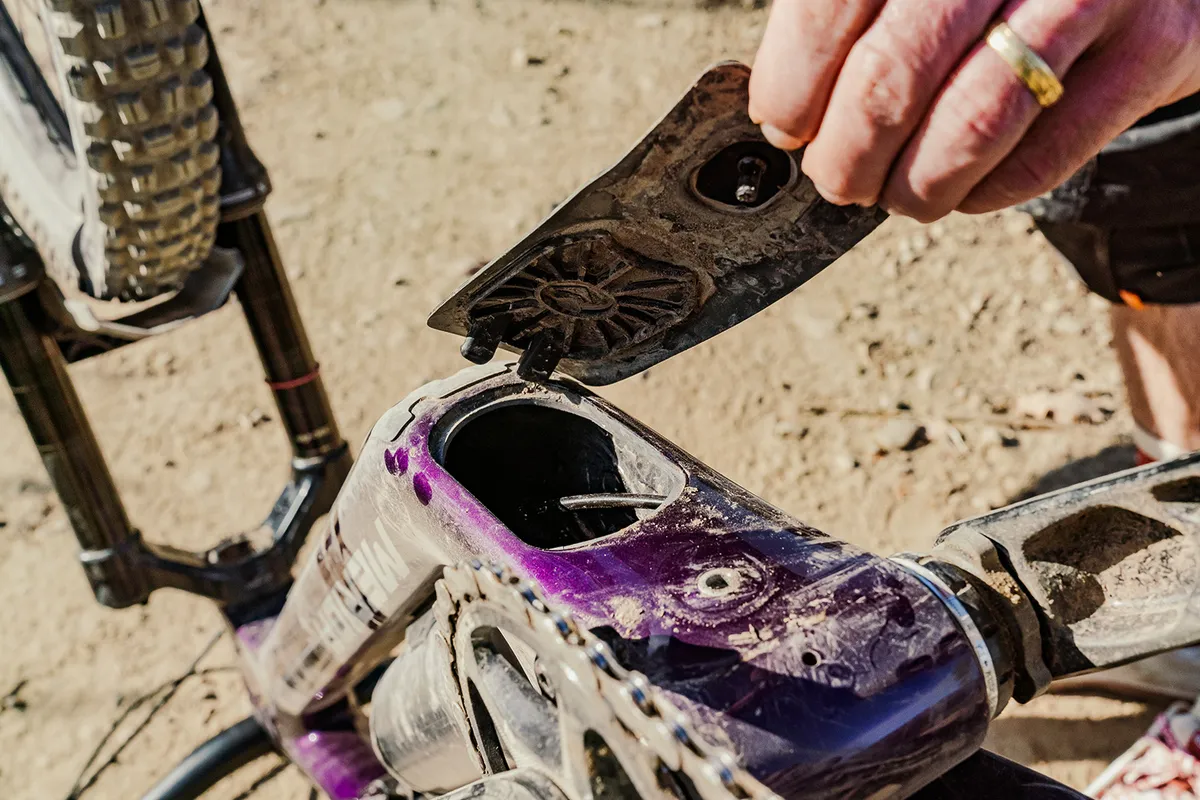
When it comes to frame details, there’s no shortage on the One-Sixty.
Flip the bike upside down and you’ll be able to access the internal frame storage (using a 4mm Allen key to open the hatch), complete with a long neoprene sleeve. This also gives access to the internally routed cabling.
Pop the quick-release lever out from the rear axle and you’ll find 4mm and 6mm Allen keys ready and waiting if you need to tweak your pivot bolts or remove a wheel. Be warned, this is prone to rattling, but slathering it in grease prevents it in my experience.
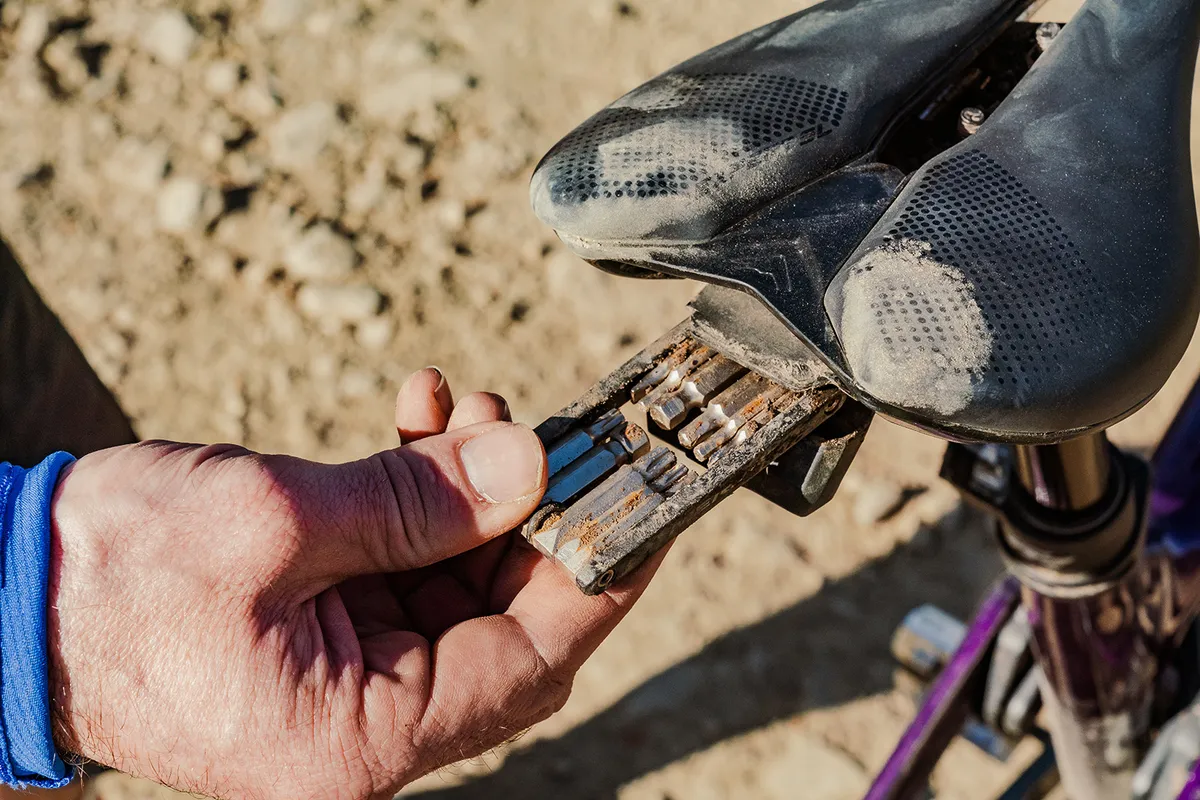
There’s also a multi-tool tucked away under the saddle inside a little rubber sleeve.
Finally, a rear fender helps reduce the amount of muck being flung around the main pivot.
If you prefer, a longer bolt-on fender can be purchased to provide a little more protection.
Merida One-Sixty 6000 geometry details
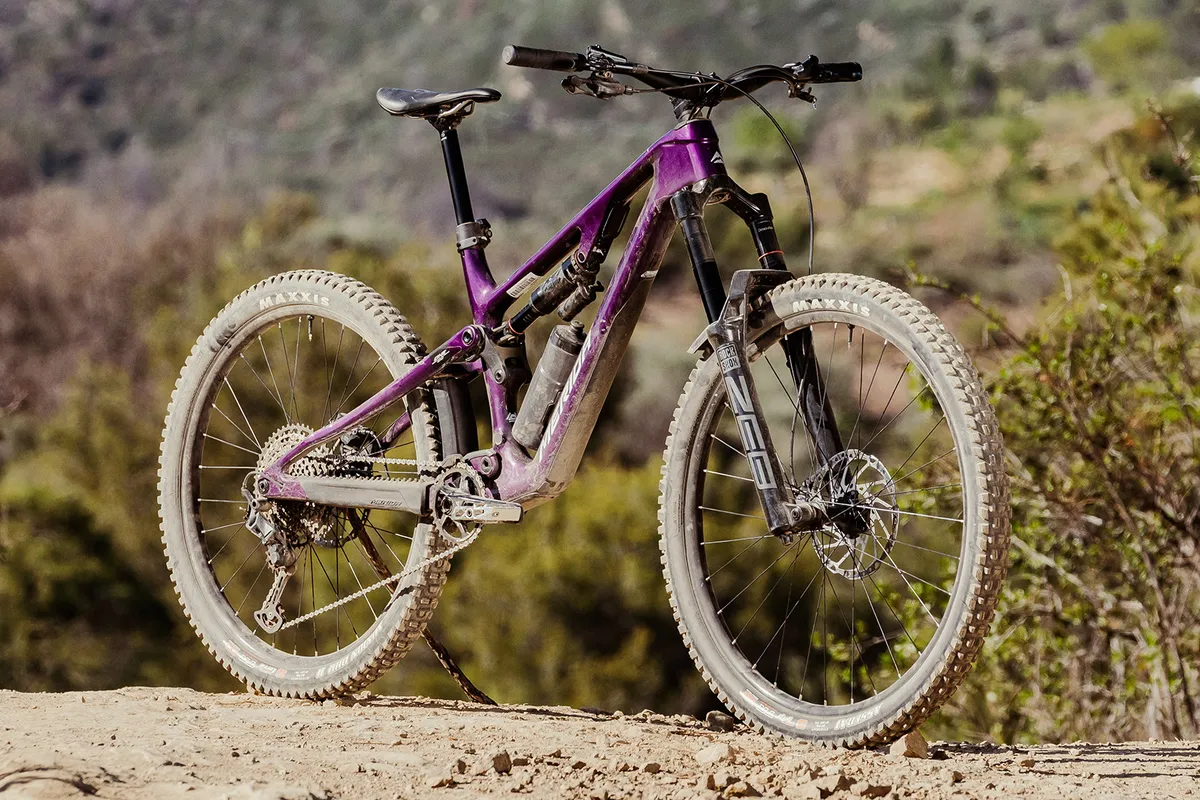
Merida offers five frame sizes, ranging from extra-short through to extra-long. As you’ll have noticed, Merida denotes the sizes with reference to length. Similar to the likes of Specialized’s ‘S’ or Cotic’s ‘C’ sizing, seat tube lengths remain relatively short across all sizes, meaning sizing up shouldn’t be ruled out if you’re keen on a little extra reach.
My ‘mid’-sized frame had a generous reach of 470mm, a slack head angle of 63.7 degrees and a lengthy 815mm front centre measurement (all of these are measured in the workshop, so may vary from Merida’s geometry table).
Unlike the suspension leverage rate that changes across the frame sizes, the rear centre (effective chainstay length) remains the same on all frames at a relatively compact 434mm.
The seat tube angle is very steep at 79 degrees and takes the joint crown of steepest seat tube angle in the Enduro Bike of the Year test, alongside the Giant Reign 1.
Taller riders should take note of the head tube lengths, which are around 5-10mm shorter when compared to similar frames from other brands (with the exception of the 120mm head tube on the extra-long frame).
This isn’t a major issue, providing Merida supplies the bike with sufficient fork steerer available to raise the stem/bar height (though raising it will shorten the reach).
In the mixed wheel-size guise, there’s not a whole lot of bottom bracket drop at just 7mm (it’s a more reasonable 27.5mm with the 29in rear wheel fitted).
This leaves the bottom bracket 343mm off the floor – certainly a ballpark figure compared to many other bikes with this amount of suspension travel.
| | XShort | Short | Mid | Long | XLong |
|---|---|---|---|---|---|
| Seat angle (degrees) | 79 | 79 | 79 | 79 | 79 |
| Head angle (degrees) | 64 | 64 | 64 | 64 | 64 |
| Chainstay (mm) | 434 | 434 | 434 | 438 | 438 |
| Seat tube (mm) | 400 | 410 | 425 | 445 | 470 |
| Top tube (mm) | 535 | 562 | 589 | 621 | 653 |
| Head tube (mm) | 95 | 95 | 95 | 105 | 120 |
| Bottom bracket drop (mm) | 7 | 7 | 7 | 27.5 | 27.5 |
| Wheelbase (mm) | 1,188 | 1,215 | 1,242 | 1,275 | 1,308 |
| Standover (mm) | 727 | 730 | 737 | 736 | 776 |
| Stack (mm) | 615 | 615 | 615 | 625 | 638 |
| Reach (mm) | 415 | 442 | 470 | 498 | 525 |
| Wheel size (inch) | 29 / 27.5 | 29 / 27.5 | 29 / 27.5 | 29 | 29 |
Merida One-Sixty 6000 specification
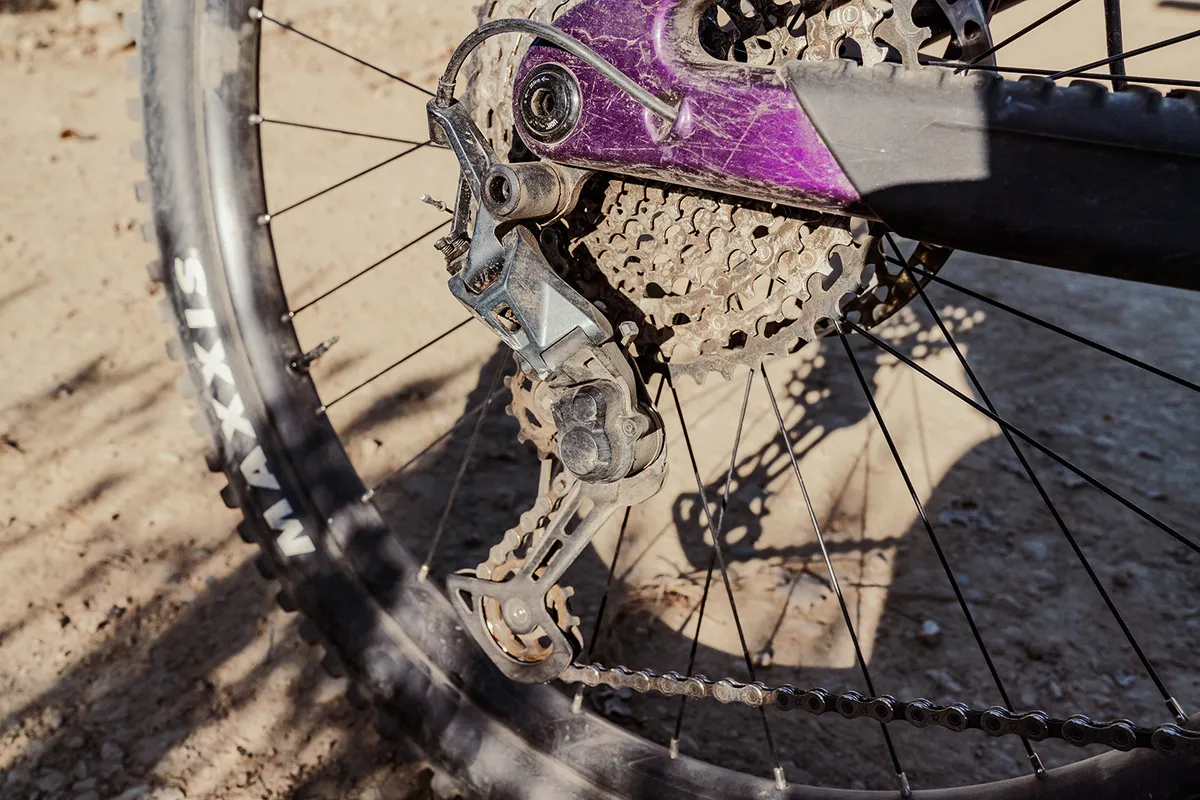
The One-Sixty 6000 is the cheapest of three carbon-framed options (the next bike up, the 8000, costs £2,000 more).
The most intriguing feature on many of the new Merida bikes is its Merida Team TR dropper post.
This clever bit of kit sits the actuator on the post collar, right where it inserts into the frame. Here, you can usefully alter the amount of drop on offer to suit your leg length. You can set it anywhere between 30 and 230mm of travel.
Altering the dropper post travel feels like a delicate process and a little fiddly, but it is effective and doesn’t take long to get the knack of it.
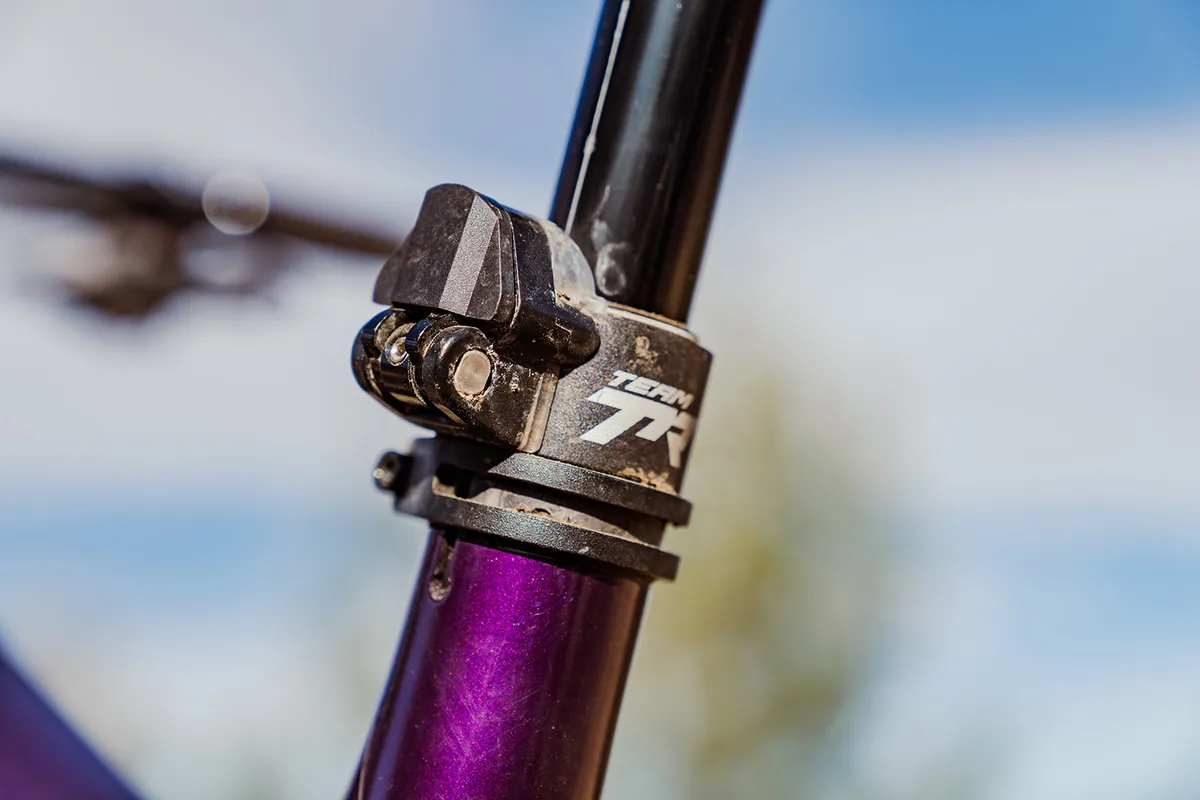
Merida provides a host of other kit on the One-Sixty 6000, including the bars, stem, saddle and rims (the hubs are Shimano SLX numbers).
Shimano’s workhorse SLX 12-speed cassette and rear derailleur are paired with a Race Face Turbine crank.
Merida made the wise choice to up-spec the shifter to a Shimano XT unit, which allows you to dump more cogs at a time when shifting into a higher gear.
The brakes also come courtesy of Shimano’s SLX range and are matched to 203mm rotors front and rear.
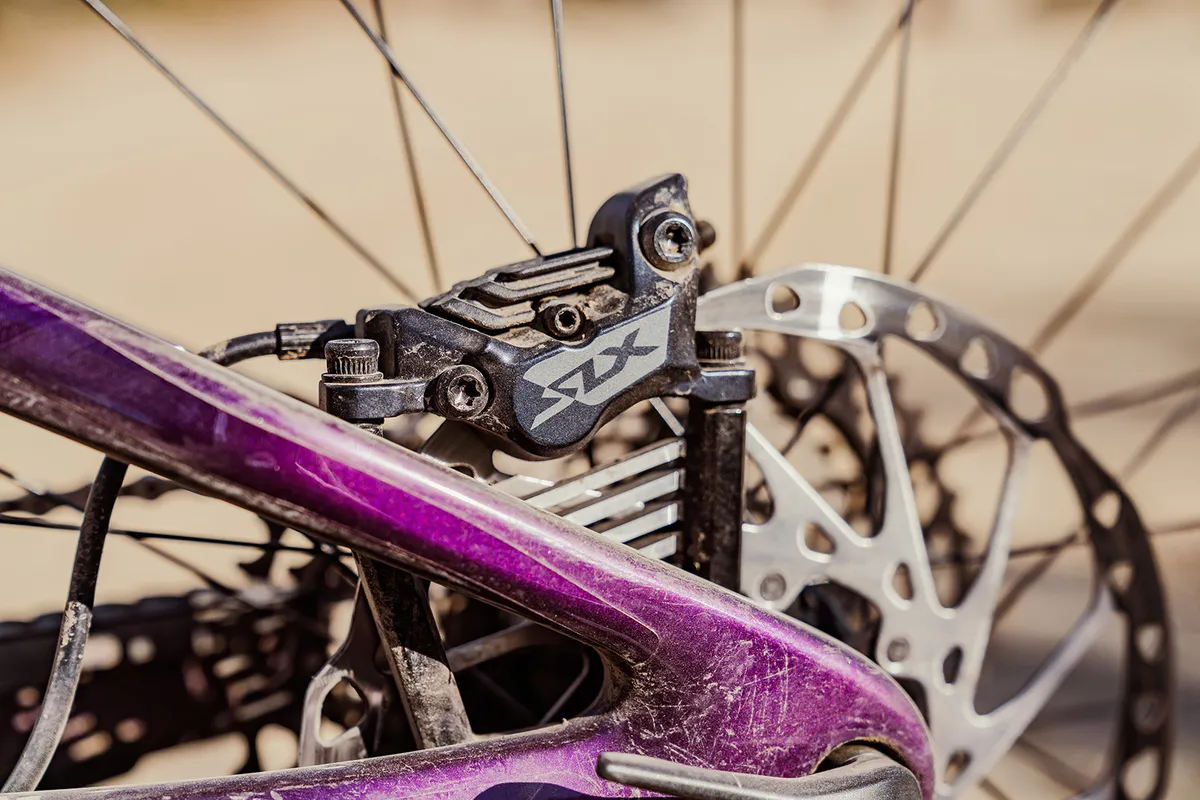
A RockShox ZEB Select fork offers up 170mm of travel and uses the more basic Charger RC damper, which features rebound and low-speed compression adjustment, though this is somewhat limited compared to the fancier Charger 3.
The RockShox Super Deluxe Select rear shock gives you rebound adjustment and a small threshold lever, which will firm the shock up for climbing.
Wrapping the own-brand wheels are a Maxxis Assegai MaxxGrip EXO 29x2.5in tyre up-front, while at the rear there’s a Maxxis Minion DHR II MaxxTerra DD 27.5x2.4in.
Merida One-Sixty 6000 ride impressions

I rode the Merida One-Sixty 6000 on a wide variety of trails around the South West of England and South Wales.
These varied in speed, gradient and terrain, including some man-made tracks littered with high-speed impacts, rock gardens and big jumps through to steeper, natural, technical trails where the roots and rocks were plentiful but speeds a little lower – along with everything in between.
Merida One-Sixty 6000 setup
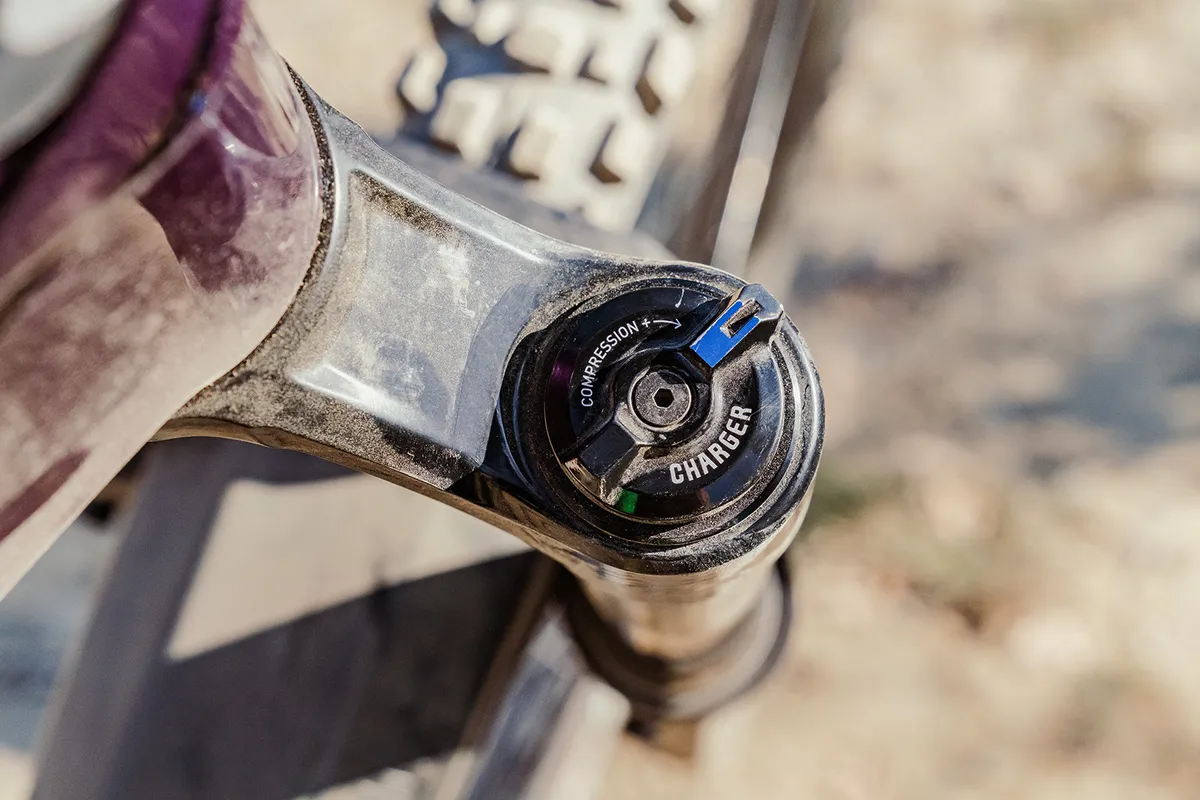
Setup on the Merida One-Sixty 6000 was reasonably quick and intuitive.
I set the stem as high as I could on the rather shorter fork steerer with 15mm of spacers beneath it (Merida says it’ll be leaving more uncut steerer as standard).
After a little bit of experimentation, I ended up with 32 per cent sag on the rear shock (151psi for my 68kg weight) and left the stock spacers in the shock (one spacer in the positive chamber).
Up-front, I found 52.5psi (with no volume spacers) was a good balance of suppleness and support in the ZEB fork, with the low-speed compression dial fully open and 20 clicks of rebound damping (from fully closed).
Too little rebound damping, though, and you’ll notice a soft ‘thunk’ as the fork tops out. A few clicks sorts this out and it still returned fast enough for my liking.
Merida One-Sixty 6000 climbing performance
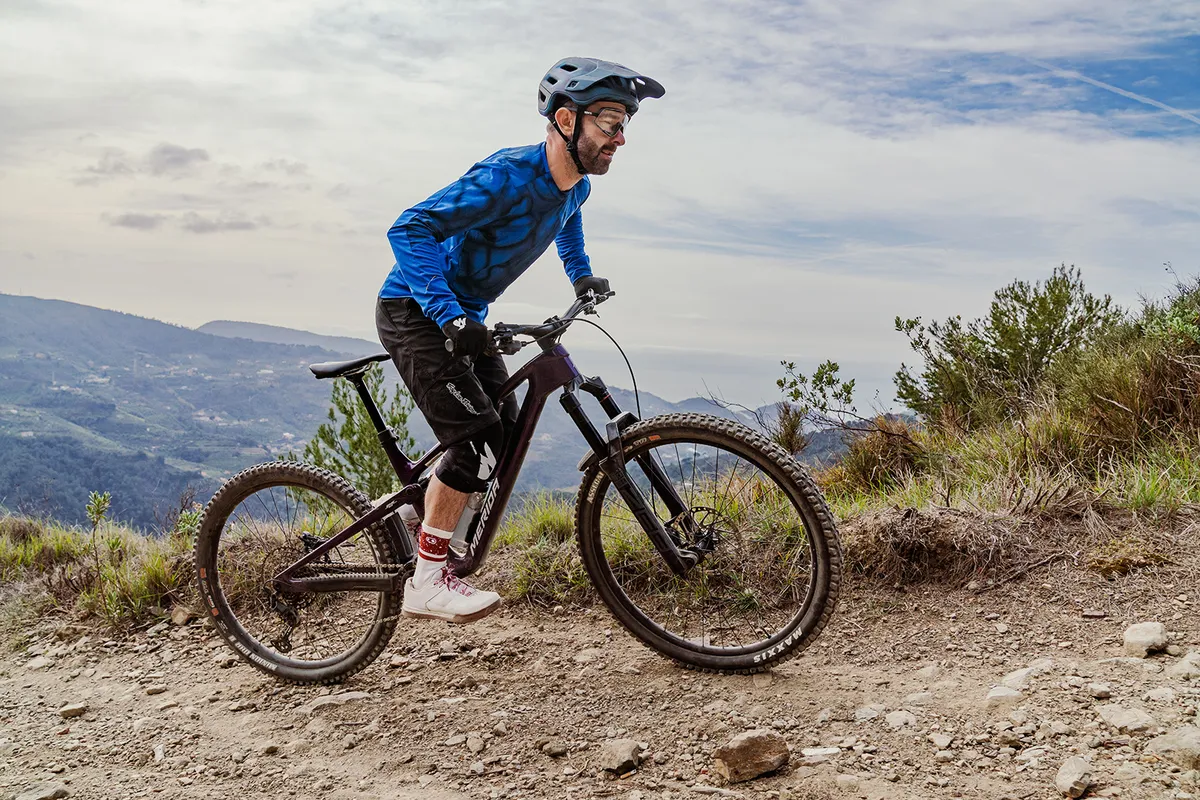
The first thing you notice when you get on the One-Sixty is just how forward you feel when seated, thanks to that super-steep seat tube angle.
This feels great when winching up climbs, especially those with steeper pitches, where you feel nicely positioned over the bottom bracket, helping to keep pedalling really comfortable.
The relatively upright position (created thanks to that steep seat tube angle and relatively compact 589mm effective top tube) felt kind on my back too (bikes with a slack seat angle can require more hunching to keep the front wheel down). I had no issues with the front wheel lifting or wandering on technical ascents.
Thankfully, the seat tube angle isn’t so steep that you end up putting too much pressure through your hands when riding on flatter ground.
Efficiency is key
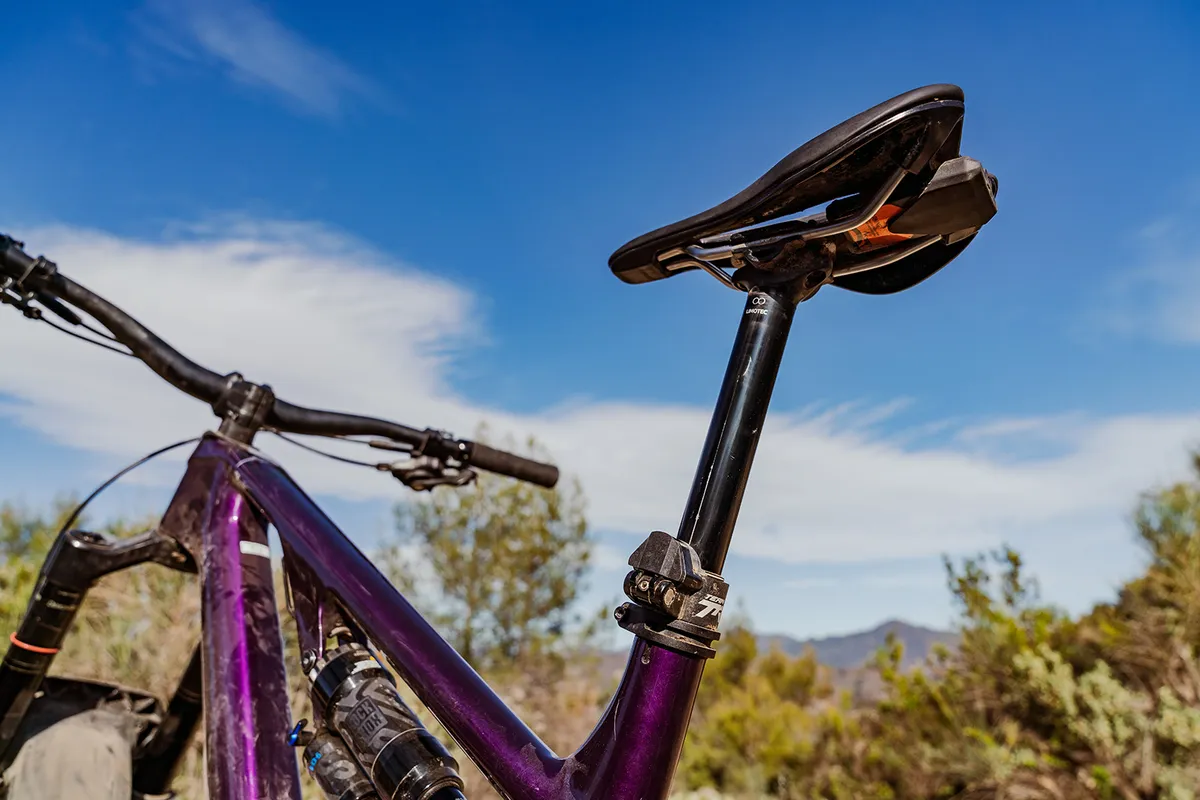
However, the seat angle is really the icing on the cake. When you start turning the pedals and working against gravity, it’s the rear suspension that seriously impresses.
When tackling a climb sat down, the back of the bike feels reassuringly calm and very stable – there’s certainly no need to firm the shock up, even when tackling road climbs.
So stable in fact, that there were times when it felt like riding a sprightlier trail bike up the hills, though the sticky rubber of the Maxxis tyres and their growl on tarmac soon brings you back to reality.
But given all the bikes in this test are equipped with the same or very similar tyres, there’s no getting away from just how well the Merida performed when pointed uphill.
In the lower gears, you’ll hear (and possibly feel) the chain rubbing on the upper chain guide, so it’s worth tweaking its position to limit this if you can.
Merida One-Sixty 6000 descending performance

Up out of the saddle and hard on the pedals, the One-Sixty appears eager to get up to speed quickly. Bursts of pedalling power feel as though they really transfer to the trail and get you moving down the hill quickly.
On trails where the gradient isn’t so significant, the One-Sixty manages to maintain a dynamic feel to proceedings. Its taut frame and supportive suspension mean you can meaningfully pump the bike through bermed turns or undulations and get the drive you’re after.
Compared to others, the speed you can generate on the One-Sixty in these situations is certainly noticeable. There were even times when it’d catch me off guard, I'd miss braking points and have to readjust my line, simply down to the extra pace I was carrying.
This ‘rat up a drain pipe’ eagerness certainly helps to keep more mundane tracks fun while you flick the One-Sixty from line-to-line and launch gaps wherever possible.
Perfectly proportioned

That said, although supportive, the early part of the 171mm of travel is nicely supple. So, even when faced with loose, rocky, unsupported turns, coupled with the impressive Maxxis rubber and the sensitive ZEB fork up-front, the One-Sixty is more than happy slicing its way through features that aren’t man-made.
For me at 172cm, the ‘mid’ frame size felt great. While the reach is quite long at 470mm (with a long 815mm front centre), the shorter 434mm rear centre helps to keep things balanced.
And despite the lack of bottom-bracket drop, the stretched-out proportions ensure it doesn’t feel tall or unstable.
When I rode particularly technical trails, I always felt well-positioned between the wheels and confident. This enabled me to push harder on familiar trails and, when coupled with that impressive suspension, meant I felt I could properly throw it into turns and remain relatively neutral on the bike, letting it bustle away beneath me.
As the gradient steepens, the One-Sixty feels suitably at home, too. There’s no shortage of stability and the reassuringly sharp stopping power of Shimano’s SLX four-piston brakes boost swagger in these tech situations.
Rocking and rolling

On faster, rockier trails, there’s no denying the One-Sixty offers a little more feedback than some bikes, though at no point does this feel harsh or unforgiving.
While it doesn’t isolate the rider in quite the same way as other, more plush suspension platforms can, the One-Sixty still mutes the impacts to ensure you can hold sketchy lines or carve cambers with confidence.
Pitch it into a rock garden at speed and you’ll be seriously impressed by the level of composure and calm this relatively lively bike can exude.
Here, both the fork and shock seem to offer masses of control deep into their travel.
Of course, the broad, grippy Maxxis tyres help here, too. The sticky rubber and tough casings add some much needed damping and control, which is especially appreciated over loose, chattery surfaces or when blitzing through boulder fields.
Highs and lows

It’s not all plain sailing, though.
While there’s no denying the One-Sixty is a formidable machine on the trail, I had a couple of issues.
Firstly, after a few months of hard use in nasty winter conditions, the dropper post developed a long score down one side. Merida says this is due to thin anodising and has updated it.
Its performance remained decent throughout, though.
Unfortunately, I also managed to ding both the front and rear rims very heavily during one very rocky run, though I think I just got unlucky and picked a bad line. Merida sent replacement wheels, which stayed ding-free, even after a week of hammering on the rocks in Italy.
And keep an eye on that multi-tool under the saddle, because it’ll rust pretty quickly if you leave it in the rubber housing for too long.
How does the Merida One-Sixty 6000 compare?

Compared to the likes of the Nukeproof Mega 297 Carbon Elite – the One-Sixty’s closest rival in this test – the Merida doesn’t offer quite the same, plush ride feel or isolate the rider from bumps quite as effectively when it’s really rough.
It does feel as though the One-Sixty has more get up and go, though, especially on faster trails that require you to work the bike through dips and troughs to maintain speed.
Both bikes feel confident in steep tech. For the Mega, that's down largely to the suspension, though the geometry is really good, too. Meanwhile, the Merida’s more stretched-out geometry plays a big part in why it feels as confident as it does.
The One-Sixty is far easier going on the climbs and feels more efficient, especially on steeper pitches.
Both offer really great parts packages, although the Merida’s brakes feel far superior to the SRAM DB8s on the Mega.
Merida One-Sixty 6000 review bottom line
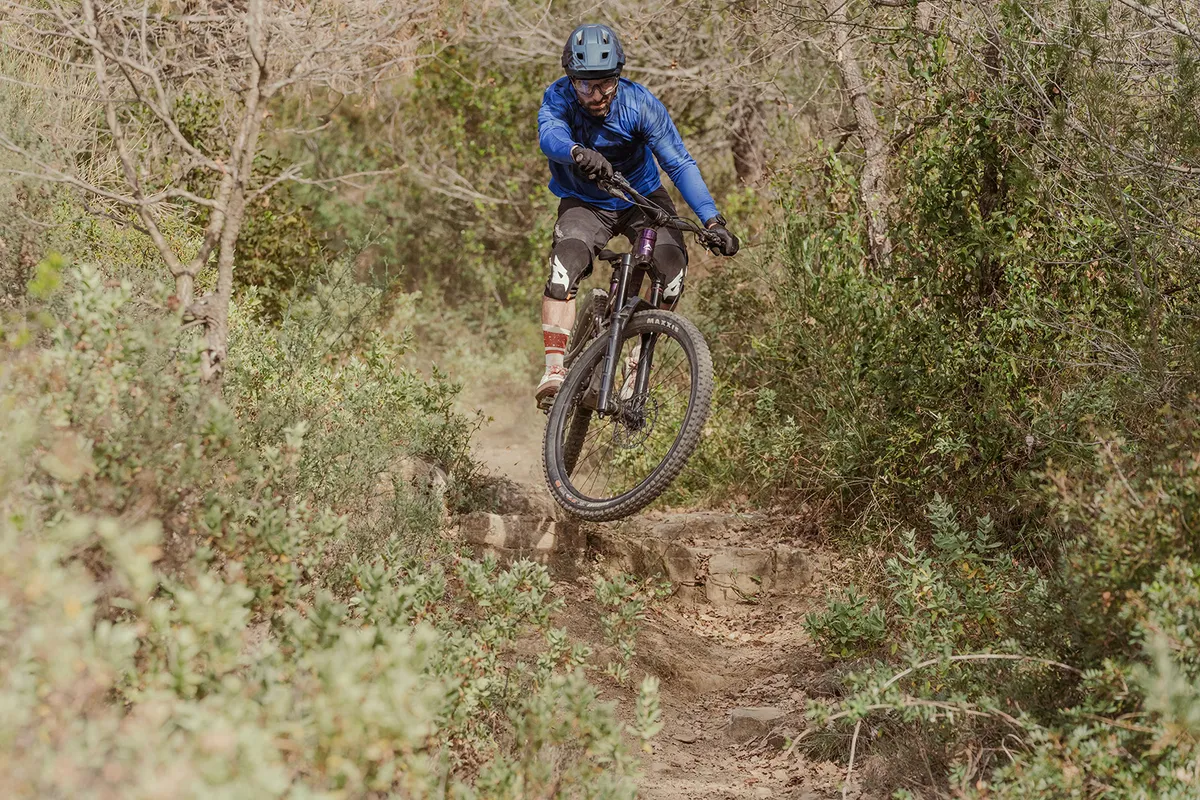
Merida has done a sterling job with the latest One-Sixty 6000 enduro bike.
Its dynamic ride feel helps to make even the mellowest trails fun, but thanks to impressive suspension feel and geometry, it’ll more than handle the rowdiest trails when you really want to drop the hammer.
The parts package is a safe bet and the neat features Merida has included are a nice touch, even if some feel as though they still need a little refining.
At the end of the Enduro Bike of the Year test, it was Merida’s proportions, supportive suspension and electrifying ride feel that finally clinched it for me.
When it confidently tackled some of the gnarliest trails I’ve ever ridden, skimming over jagged rocks and drifting through loose turns at serious pace, I knew it had to take the top spot.
Enduro Bike of the Year | How we tested
Just what constitutes a great enduro bike and what does it take to earn the crown of the best enduro bike on test?
We’d argue it’s all about balance and compromise.
Enduro riding and racing takes in all kinds of terrain and gradients. To tackle it confidently, safely and at pace, your bike needs to feel balanced, composed and stable.
Essentially, that equates to suspension that keeps the tyres glued to the trail but prevents the bike feeling like a bucking bronco when things get rough.
Of course, balance doesn’t just come from the suspension, but the geometry, too. The right mix should enable it to feel like to a downhill bike when gravity is on its side and pedal back up the hill when the time comes.
The parts package needs to offer good value for money too. There’s always going to be an element of compromise, but the smart brands will spend their budgets wisely.
Over a 12-week period, all of the bikes in this category were put through their paces on a wide variety of trails and tracks to ascertain their strengths and weaknesses.
The bikes were ridden back-to-back, as well as in varying orders to see how each one felt at the start and end of the day, once rider fatigue had set in.
Our 2023 Enduro Bike of the Year contenders are:
- Nukeproof Mega 297 Carbon Elite
- YT Capra 29 Core 4
- Merida One-Sixty 6000
- Canyon Strive CFR Underdog
- Vitus Sommet 297 AMP
- Giant Reign 1
- Cotic RocketMAX Silver Mullet
- Bird Aeris 9
Thanks to…
Thanks to our sponsors Crankbrothers, FACOM Tools, MET helmets, Bluegrass Protection, Supernatural Dolceacqua, Le Shuttle and BikePark Wales for their support in making Bike of the Year happen.
Product
| Brand | merida |
| Price | 4600.00 GBP |
| Weight | 16.1200, KILOGRAM (Mid) - without pedals |
Features
| Fork | RockShox ZEB Select |
| br_stem | Merida Expert eTRII |
| br_chain | KMC X12 |
| br_frame | Carbon, 171mm travel (mullet) |
| Tyres | Maxxis Assegai MaxxGrip EXO+ 29x2.5in (fr) and Maxxis Minion DHRII MaxxTerra DD 27.5x2.4in (r) tyres |
| br_brakes | Shimano SLX M7120 (203mm rotors) |
| br_cranks | Race Face Turbine |
| br_saddle | Merida Expert SL |
| br_wheels | Merida Expert TR rims on Shimano SLX hubs |
| br_headset | Merida 8151 |
| br_shifter | Shimano XT |
| br_cassette | Shimano SLX |
| br_seatpost | Merida Team TR, 230mm |
| br_gripsTape | Merida Expert EC |
| br_handlebar | Merida Team TR, 780mm |
| br_rearShock | RockShox Super Deluxe Select+ |
| br_availableSizes | XShort, Short, Mid, Long, XLong |
| br_rearDerailleur | Shimano SLX |
